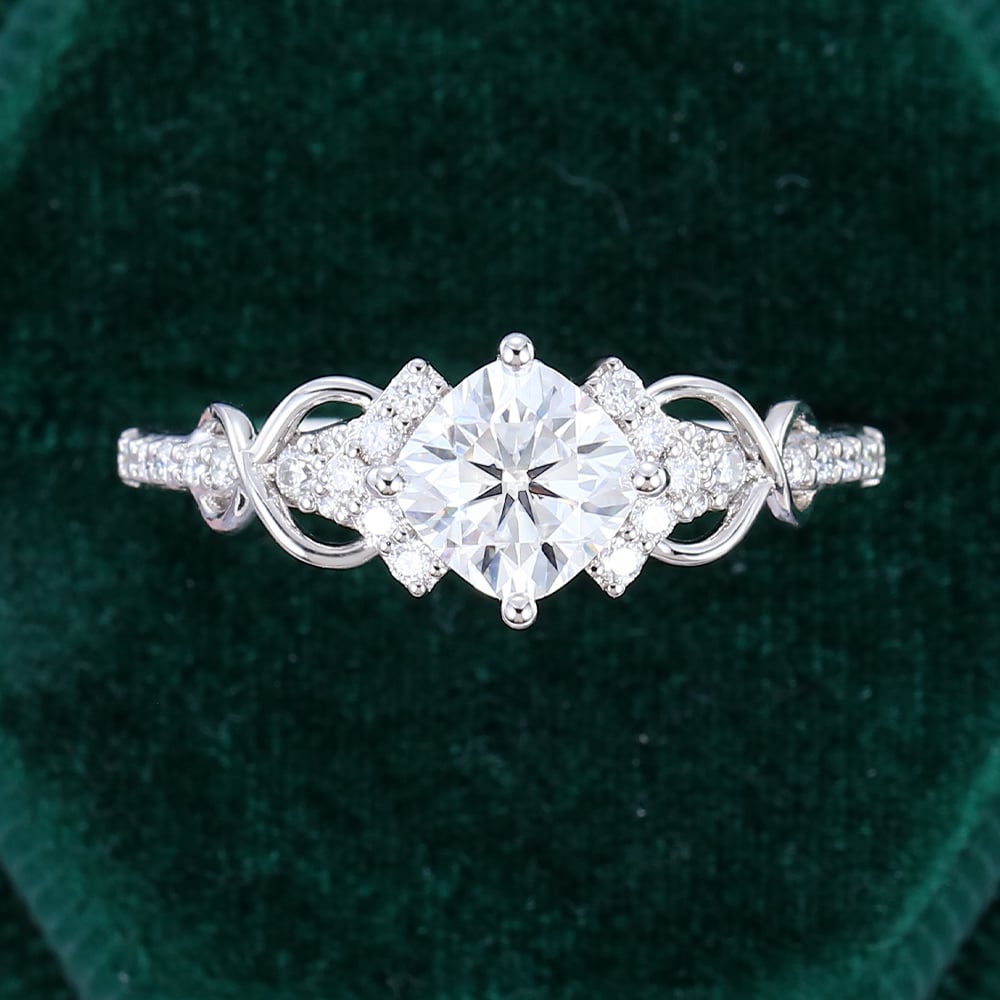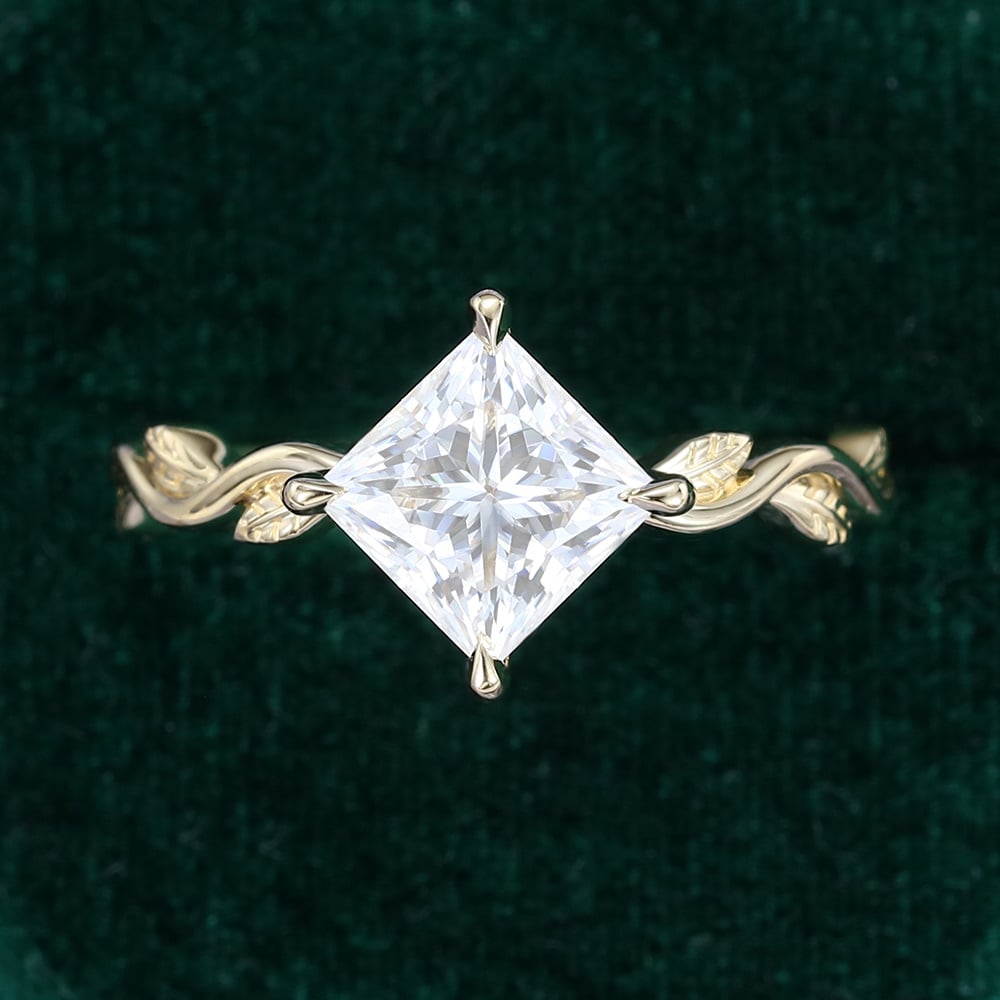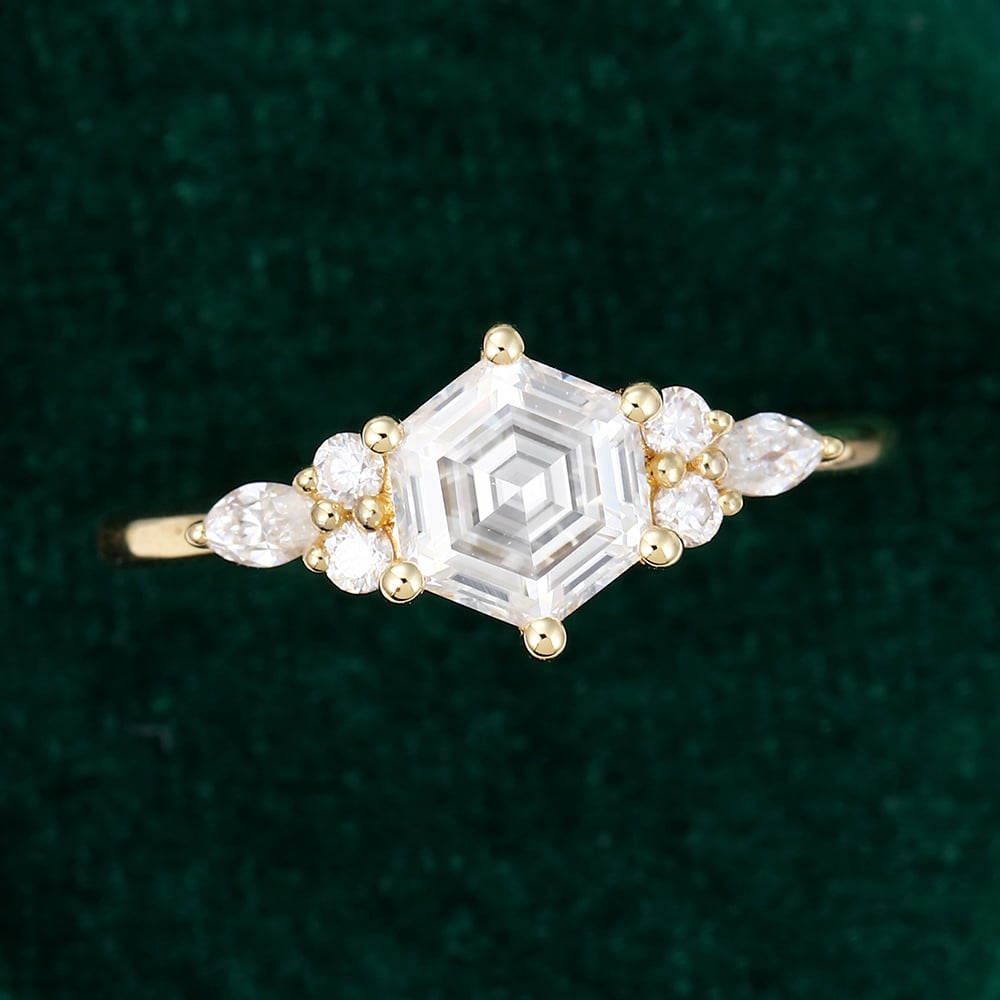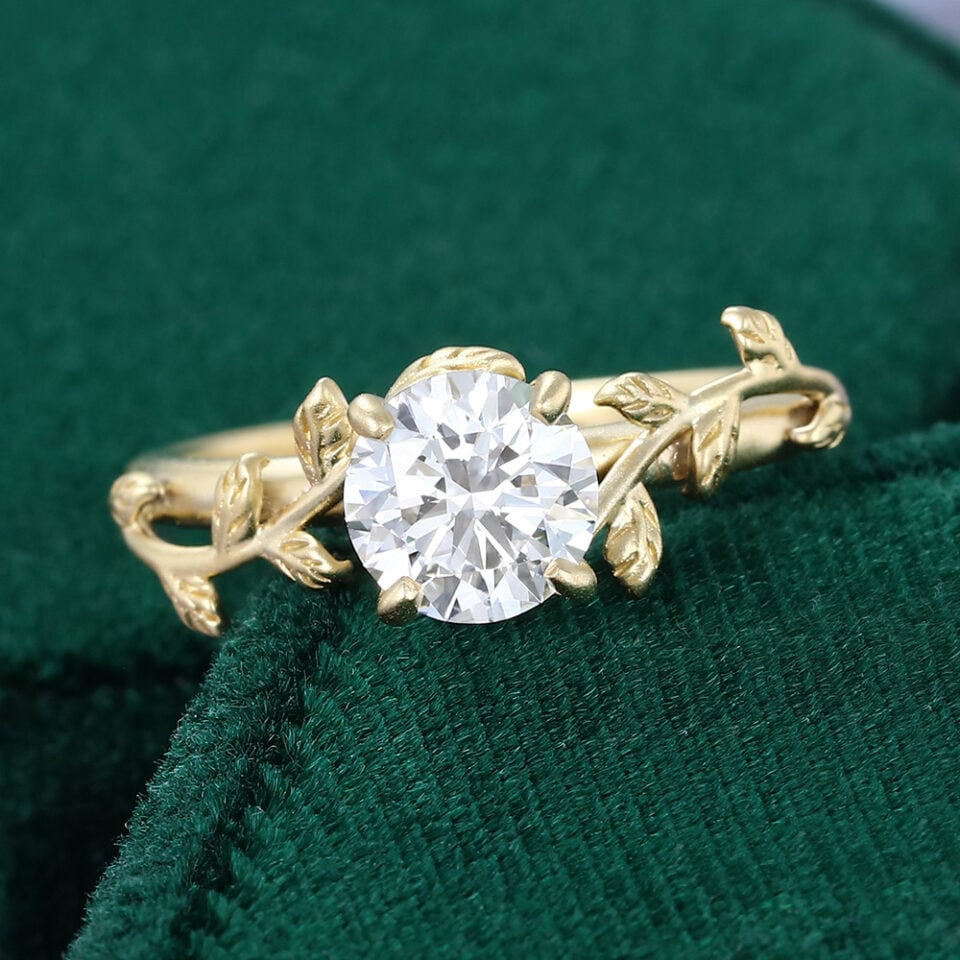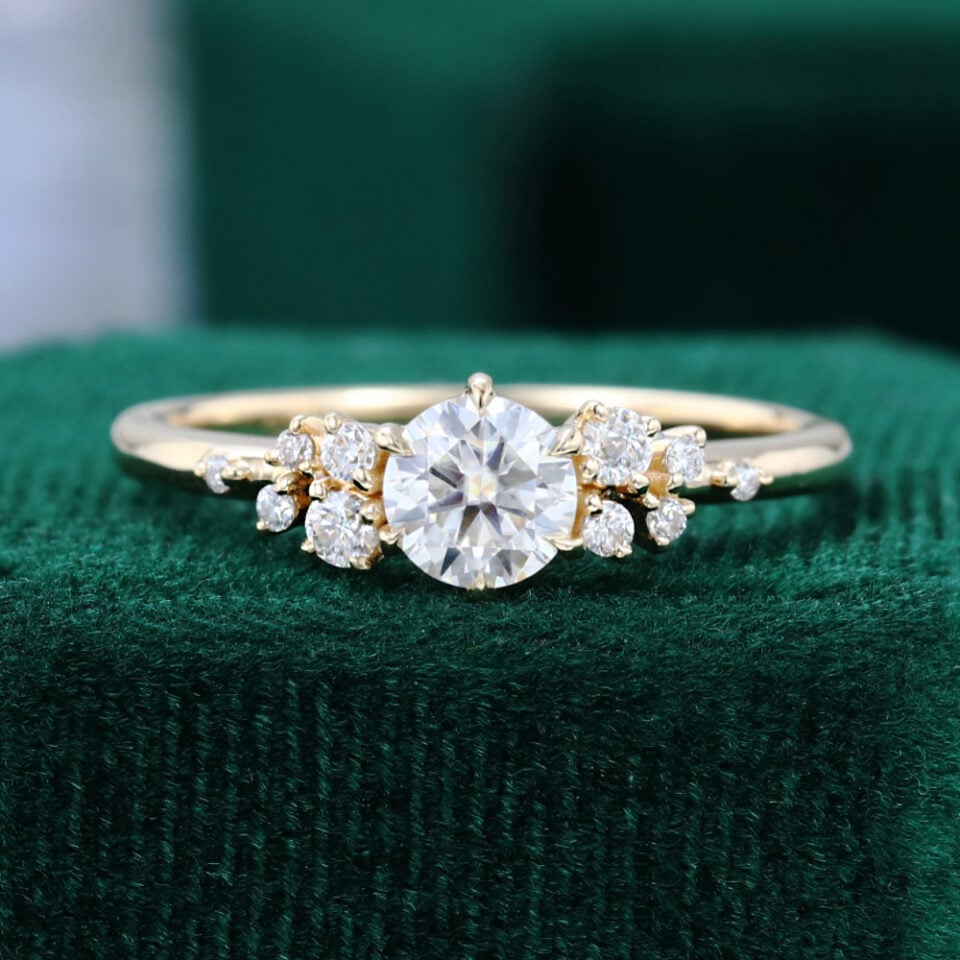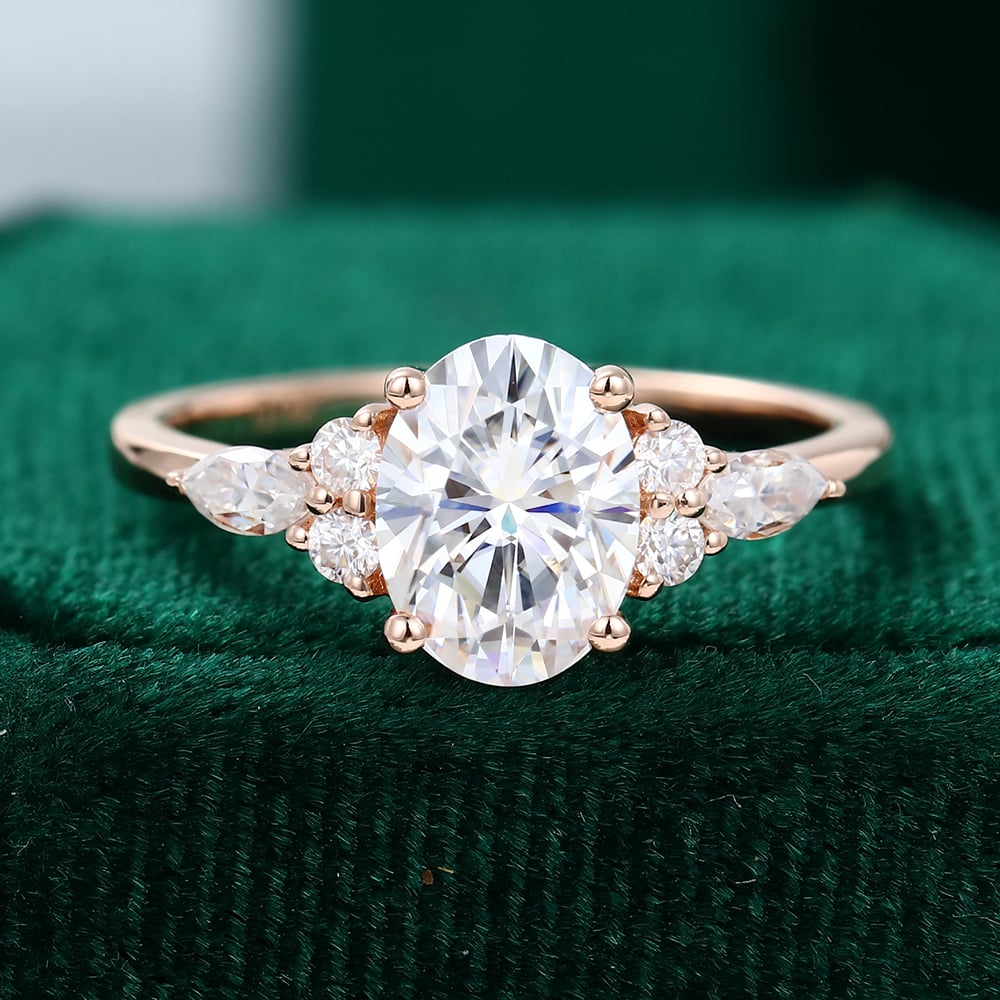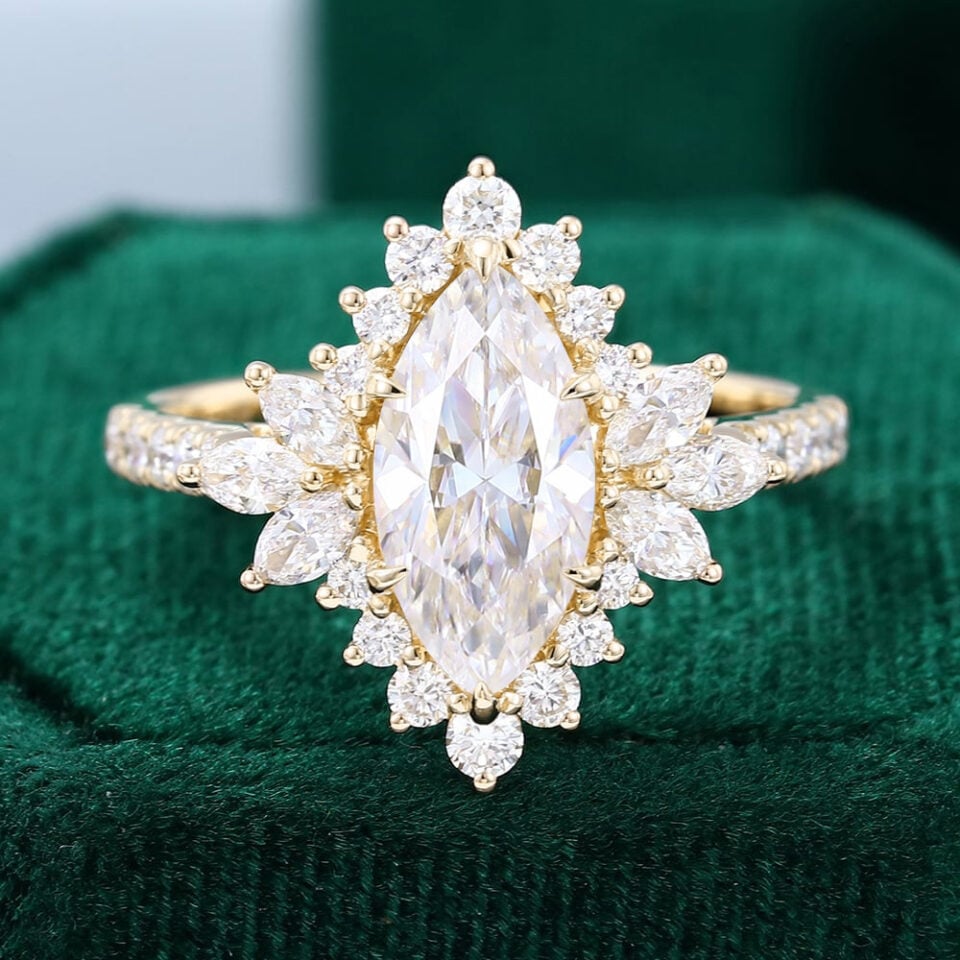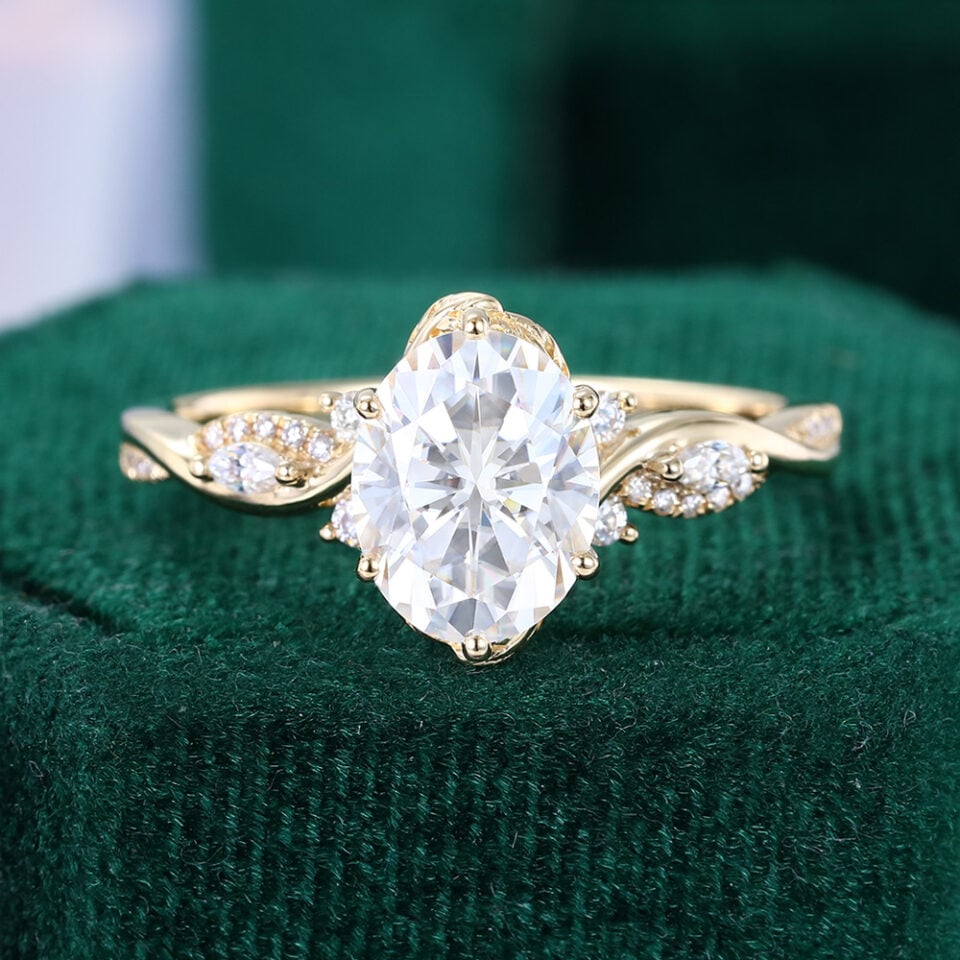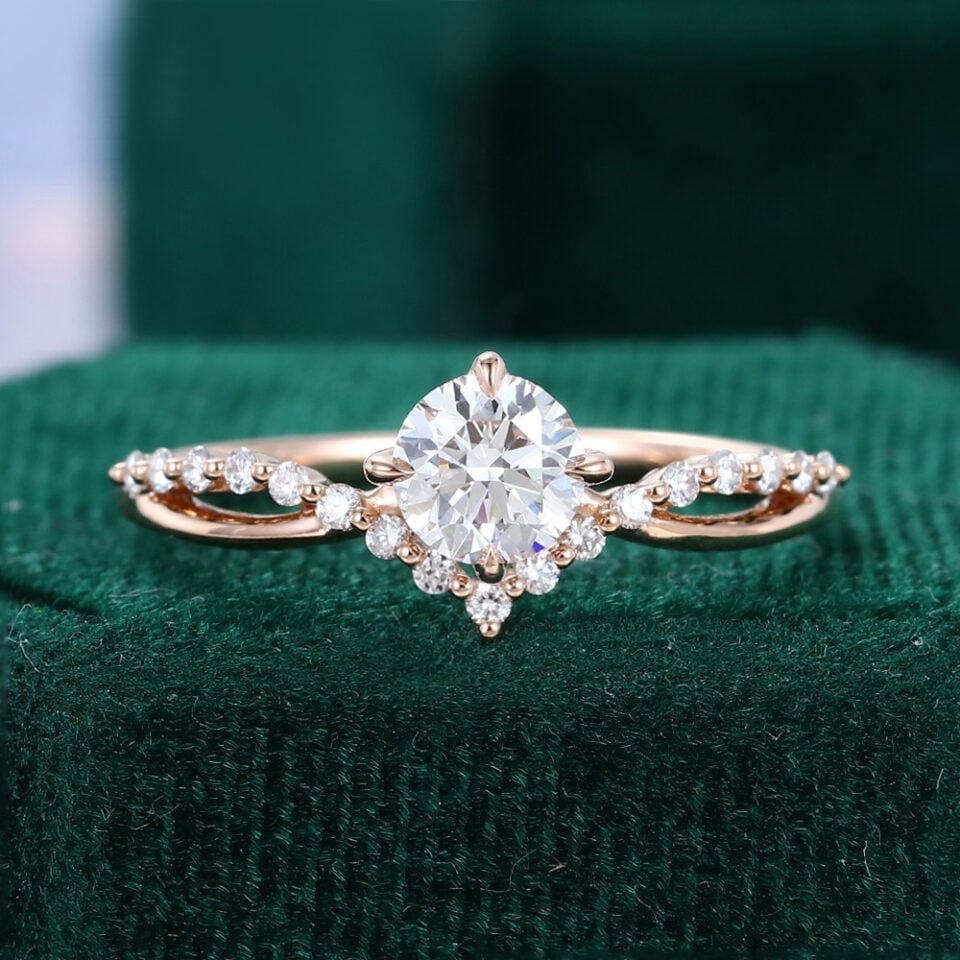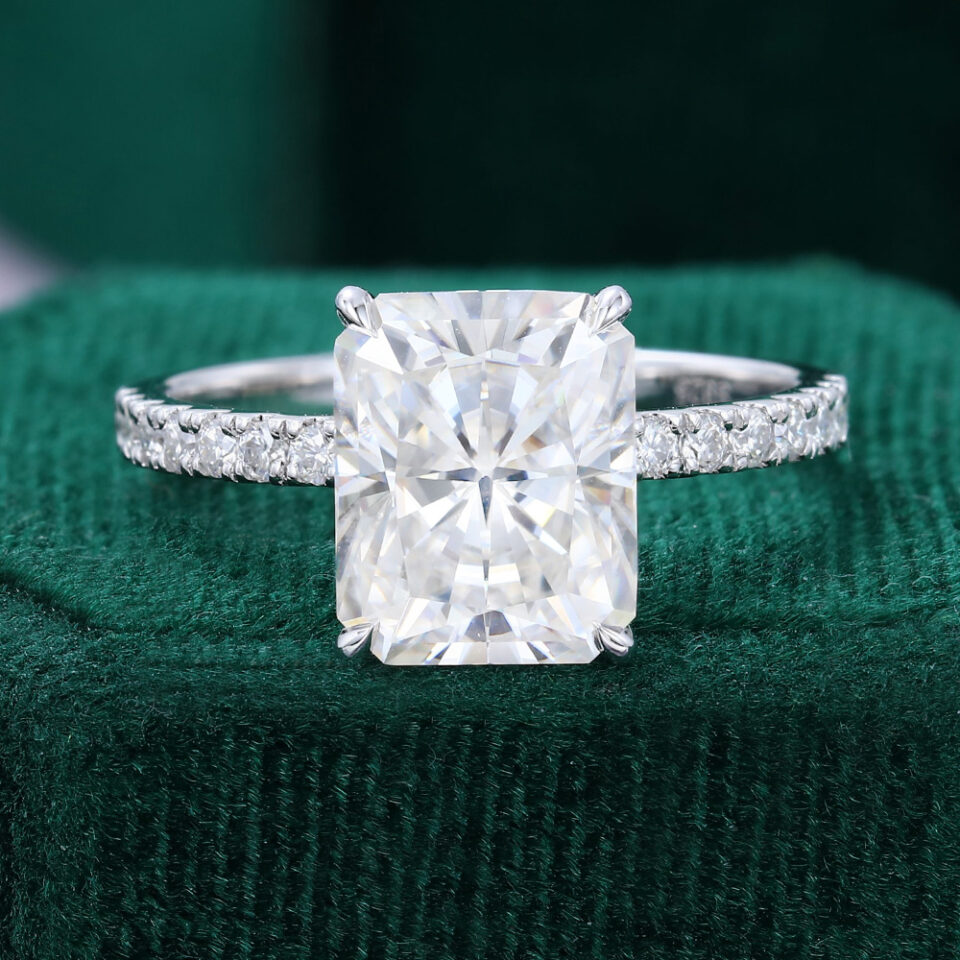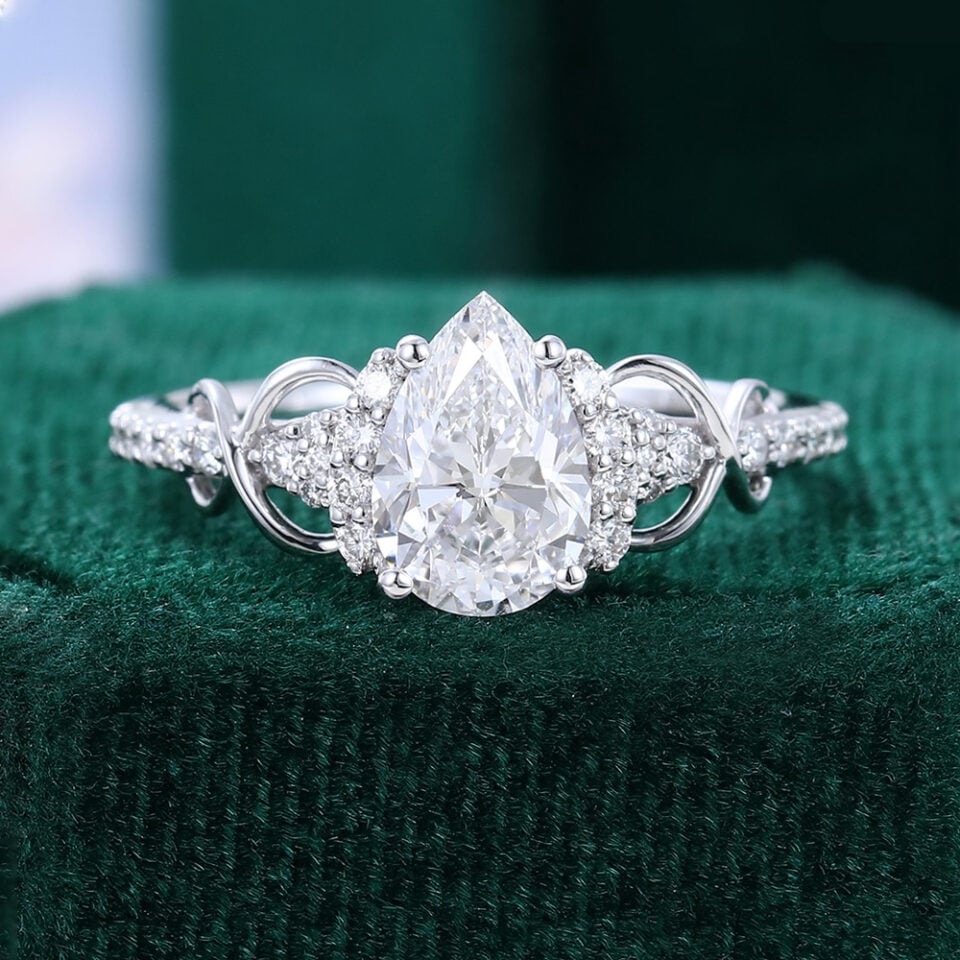Let’s be honest—when you start shopping for an engagement ring, the first question that usually comes to mind is, “How much will it cost?” After all, price often sets the tone for everything that follows.
Both diamonds and moissanite capture hearts with their brilliance, but the difference in their pricing structure and overall value is significant.
In this guide, we’ll dive into a detailed price comparison between the two gemstones and explore what really drives the difference in cost.
Below, you’ll find a clear moissanite vs. natural diamond vs. lab diamond price chart, followed by a practical guide to help you choose the best option for your budget.
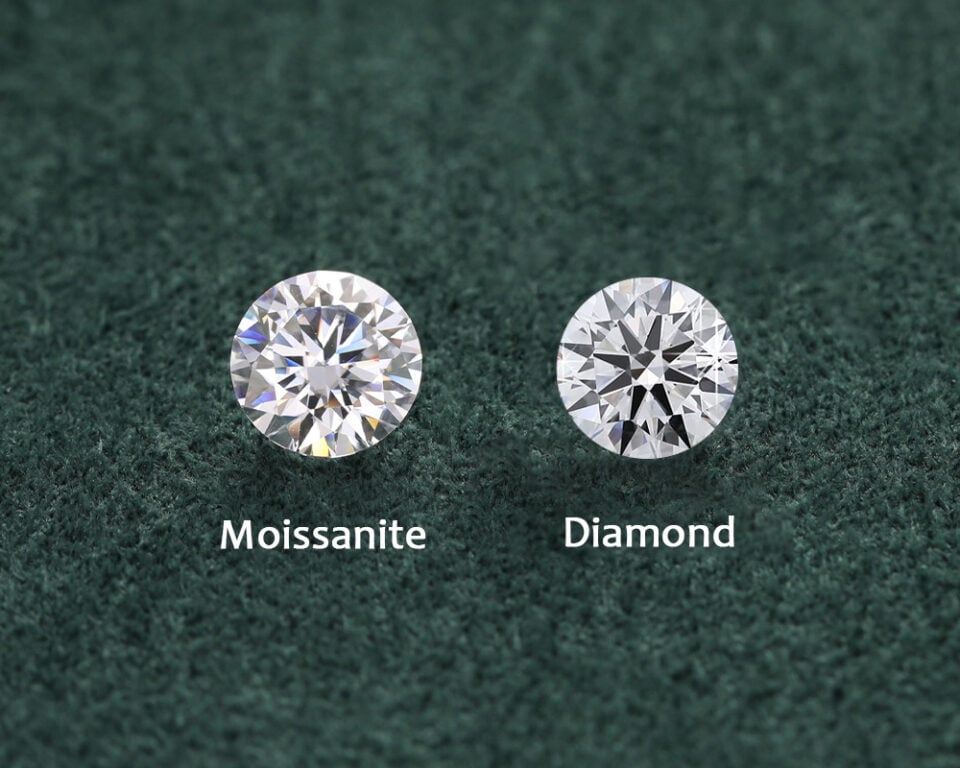
Table Of Contents:
- Moissanite vs. Natural Diamond vs. Lab Diamond Price Chart
- The Two Main Reasons Behind the Price Gap
- Moissanite vs. Diamond Rings: Which Should You Choose?
- Budget Guide & Value Maximization Strategies
- Related FAQs
Moissanite vs. Natural Diamond vs. Lab Diamond Price Chart (Retail Range)
Note: The following table reflects common retail price ranges for the round cut (the most popular shape). Actual prices may vary depending on cut quality, color, clarity, brand, and promotions.
| Shape | Carat | Moissanite | Natural Diamond | Lab Diamond |
|---|---|---|---|---|
| Round | 0.5ct | $150–$350 | $1,000–$2,500 | $500–$1,300 |
| Round | 1ct | $300–$600 | $3,890–$6,000 | $1,000–$3,000 |
| Round | 2ct | $600–$1,200 | $12,000–$20,000+ | $3,800–$7,500 |
| Round | 3ct | $1,200–$3,000 | $25,000–$40,000+ | $7,000–$13,500+ |
As shown in the chart above, diamond prices rise exponentially—not linearly—as carat weight increases. This means the price gap between diamonds and moissanite widens dramatically at larger sizes. The data highlights moissanite’s unbeatable value-for-size advantage.
Both diamond and moissanite prices are also influenced by cut shape. Among stones of the same carat weight, the round brilliant is usually the most expensive due to higher material waste and more demanding cutting standards. The oval cut has become similarly priced in recent years thanks to its rising popularity. Most fancy shapes (such as pear, cushion, emerald, marquise, radiant, and princess cuts) tend to be about 25% less expensive than rounds—though the difference can range anywhere from 10% to 65%, depending on the specific shape and market demand.
The Two Main Reasons Behind the Price Gap
1. Rarity and Supply
Natural diamonds are expensive because they’re rare, hard to mine, and major brands tightly control their supply.
Lab-grown diamonds have the same composition and sparkle but are created in laboratories, reducing production costs and ensuring ethical sourcing.
Moissanite, made from silicon carbide, is the most budget-friendly option. It can be produced quickly, consistently, and with minimal environmental impact.
2. Market Positioning
Natural diamonds have long been seen as symbols of status and timeless love, often holding stronger resale value.
Lab-grown diamonds offer the same brilliance with a modern, ethical edge at a more approachable price.
Moissanite, meanwhile, appeals to those who value beauty, sustainability, and affordability—offering exceptional sparkle without the traditional markup.
Moissanite vs. Diamond Rings: Which Should You Choose?
While the final choice depends on your personal preferences, if your budget is under $3,000, we recommend choosing a moissanite engagement ring. Based on the price comparison above, that amount wouldn’t even buy you a 1-carat natural diamond ring—but it could easily get you a 3-carat moissanite ring. With the money you save, you can upgrade to a higher-quality band, a more intricate setting, or even add custom engraving, creating a truly one-of-a-kind ring. Lab-grown diamond rings can be a good choice, but you might have to settle for smaller size, simpler design, or slightly lower-quality stones.
Beyond affordability, moissanite rings also offer a more transparent and ethical supply chain compared to many mined diamonds. If you care about conflict-free and responsibly sourced jewelry, moissanite is a choice you can feel good about.
Some people worry that moissanite looks “cheap” or lacks durability—but that’s a misconception. Moissanite ranks 9.25 on the Mohs hardness scale, just below diamond’s perfect 10. Visually, moissanite tends to show a rainbow-like brilliance, while diamonds reflect a cooler, white sparkle—yet the difference is nearly impossible to notice from normal viewing distance.
Looking for the perfect moissanite ring that fits both your style and your budget? At MollyJewelryUS, our collection offers stunning, high-quality moissanite rings at very affordable prices. You can easily browse by shape, carat size, and style, helping you find a ring that feels truly one-of-a-kind without breaking the bank.
Moissanite Rings Shop By Shape
Whether you’re shopping on a modest budget or simply want to make an informed choice, the following guide can help you maximize value at every price level.
Budget Guide & Value Maximization Strategies
When buying an engagement ring, your budget should balance the center stone size and quality with the metal choice and design details. Here’s how to get the most for your money:
Budget Tier 1: Under $500
This is moissanite’s exclusive territory—natural diamonds aren’t practical at this price. You can get a 1-carat moissanite set in sterling/gold-plated silver, or a 0.5-carat moissanite set in 10k/14k Gold.
Budget Tier 2: $500–$1,000
With this budget, natural diamonds are limited to stones under 0.3 carats, often in cluster or minimalist settings.
But if you choose moissanite, you can get a 1.5–2.0 carat stone, paired with sterling silver or 10K/14K gold. (Silver works best for ornate or halo-style designs; gold suits simple, timeless solitaire.)
Budget Tier 3: $1,000–$2,000
At this level, you can explore all three options—moissanite, natural diamond, or lab-grown diamond.
- Moissanite Option: Flexible—choose a 1–2 carat stone with 18K gold or platinum and a more elaborate, custom design.
- Natural Diamond Option: Limited to a 0.5-carat diamond of modest quality, often set in silver or gold-plated silver with simpler styling.
- Lab-Grown Diamond Option: Affordable 1–1.5 carat stones, though you may need slight compromises on metal or design—or a 0.5-carat stone in a premium metal setting.
Budget Tier 4: $2,000–$5,000
This is the most competitive and versatile range, offering endless design and gemstone possibilities from 1.0–3.0 carats.
- Natural Diamond Option: You may need to trade off size or quality, e.g., 0.7–1.0 carat fancy shapes with simpler metals.
- Moissanite Option: Take advantage of moissanite’s value—get a 3.0–4.0 carat centerpiece with a custom or vintage-inspired setting ($2,000–$4,500 total).
- Lab-Grown Diamond Option: Ideal for buyers seeking “diamond status” with ethical sourcing. Find 1.0–1.5 carat D–E color, VVS/VS1 clarity stones for $1,000–$2,500, paired with a 14K or 18K gold halo or pavé setting.
Budget Tier 5: $5,000 and Above
At this stage, decisions are driven less by cost and more by personal values and emotional significance. Whether you choose moissanite, lab-grown, or natural diamonds depends on what matters most to you—tradition, ethics, or sparkle.
If your goal is to get the biggest, brightest, and most dazzling look within a limited budget—and you also care about ethical sourcing and value for money—a moissanite ring is definitely worth considering.
Want to make the most of every penny in your budget? Customization is definitely the perfect choice—check out our Customization Guide or contact us right away! Just let us know your budget, and we’ll help you maximize its value to the fullest.
Related FAQs
Whether you’re shopping on a modest budget or simply want to make an informed choice, the following FAQs cover some of the most common questions about moissanite and diamond rings.
Moissanite is lab-created, supply is abundant, while natural diamonds are rare, have higher resale and collectible value.
We recommend a moissanite ring. For $2,000, you likely couldn’t afford a 1-carat natural diamond, but you can easily get a 2-carat moissanite with a beautiful setting.
A 1-carat moissanite typically costs $300–$600, while a 1-carat natural diamond ranges from $3,000 to $6,000, depending on cut, clarity, and color.
Not at all. The price difference reflects rarity and sourcing, not quality. Moissanite is durable (9.25 Mohs scale), even more brilliant than many diamonds, and represents an ethical, sustainable choice.
Yes. Fancy cuts are usually less expensive than round brilliants because round cuts waste more material and require more precise craftsmanship.
Lab-grown diamonds are more affordable than natural diamonds, but still 2–5 times more expensive than moissanite. For example, a 1-carat lab-grown diamond costs ~$1000–$3,000, while a 1-carat moissanite is typically under $600.
Not exactly. Natural, certified diamonds maintain higher resale value due to rarity and demand. Moissanite appeals to buyers who prioritize affordability, brilliance, and ethical sourcing over investment.





